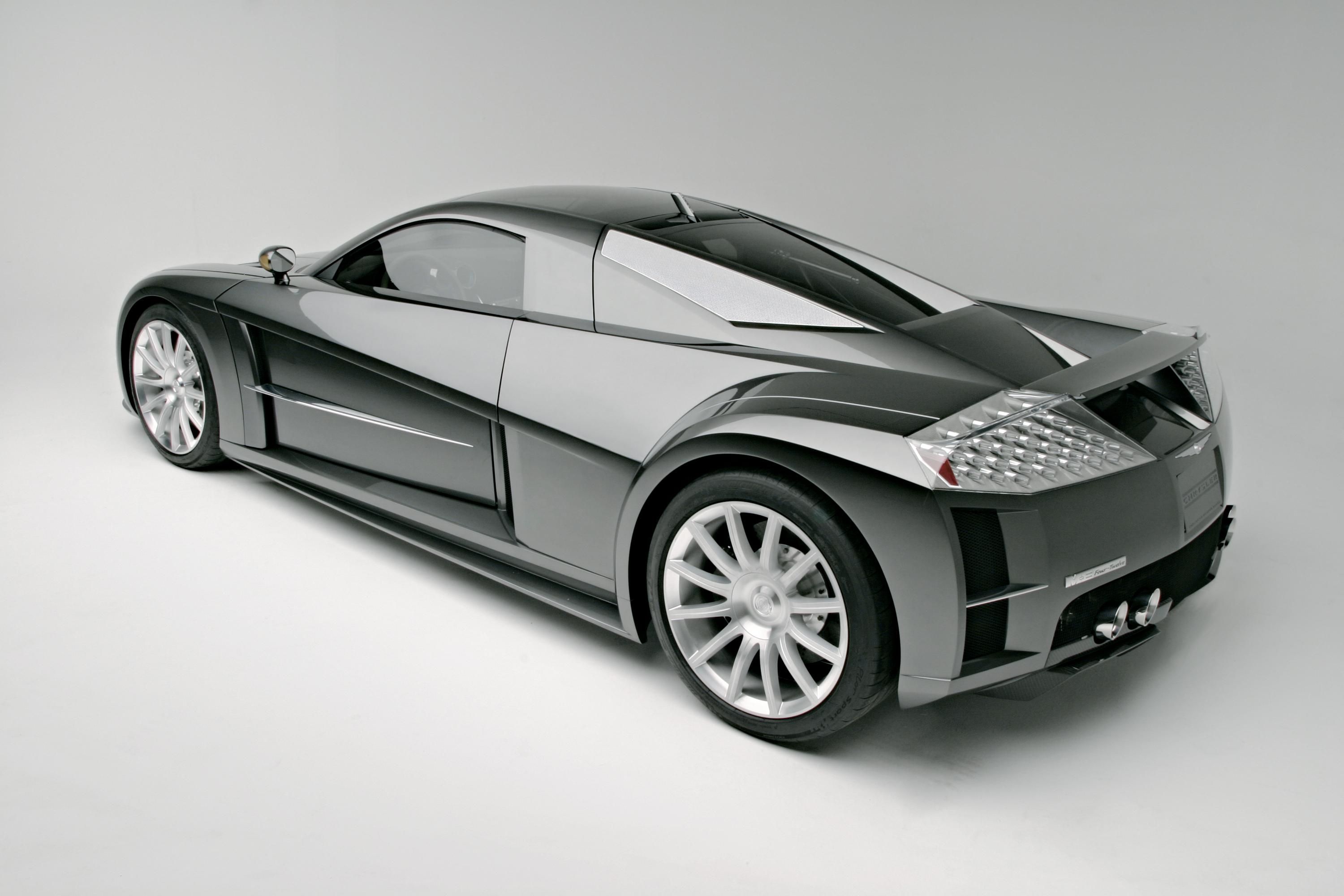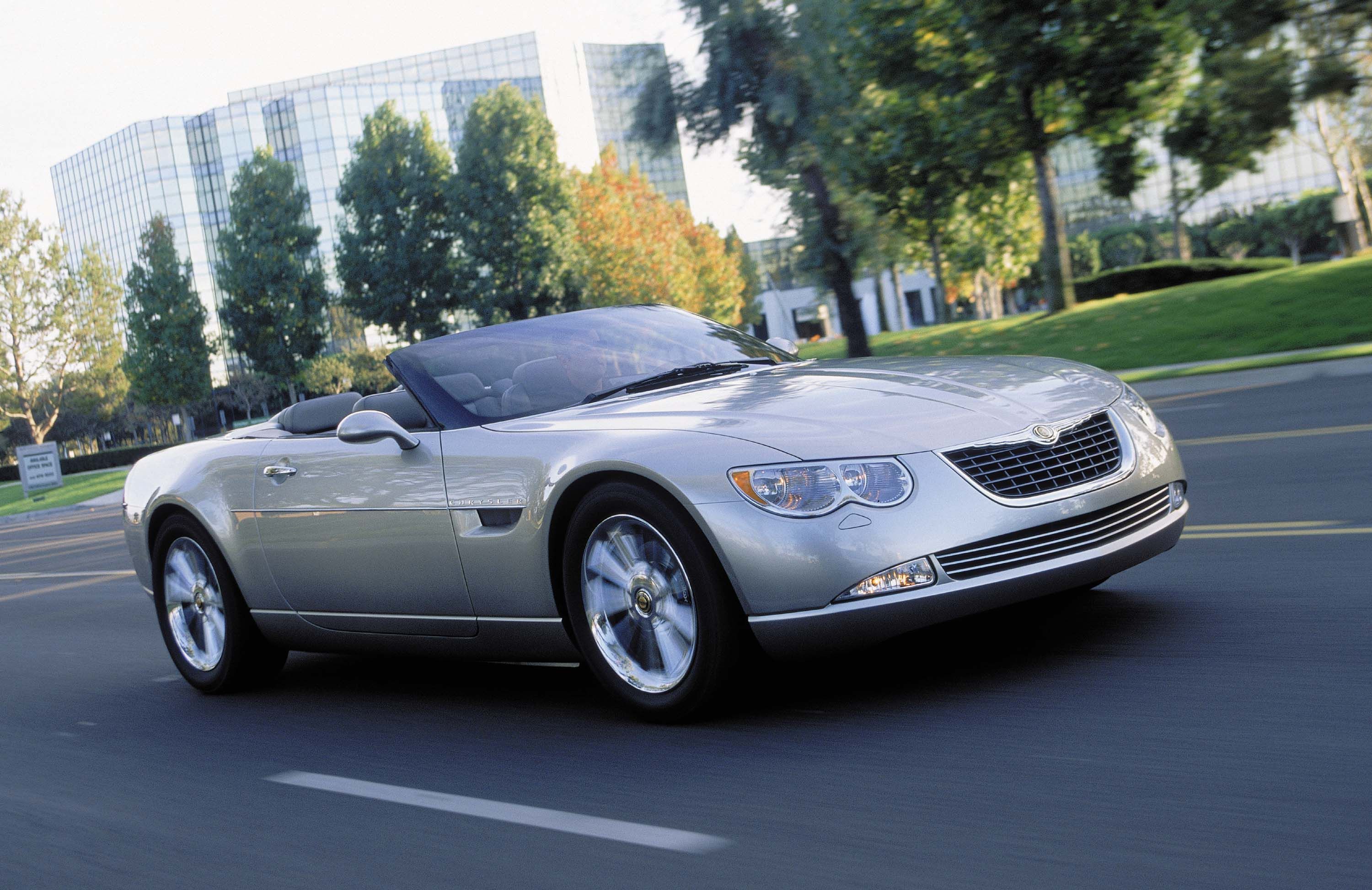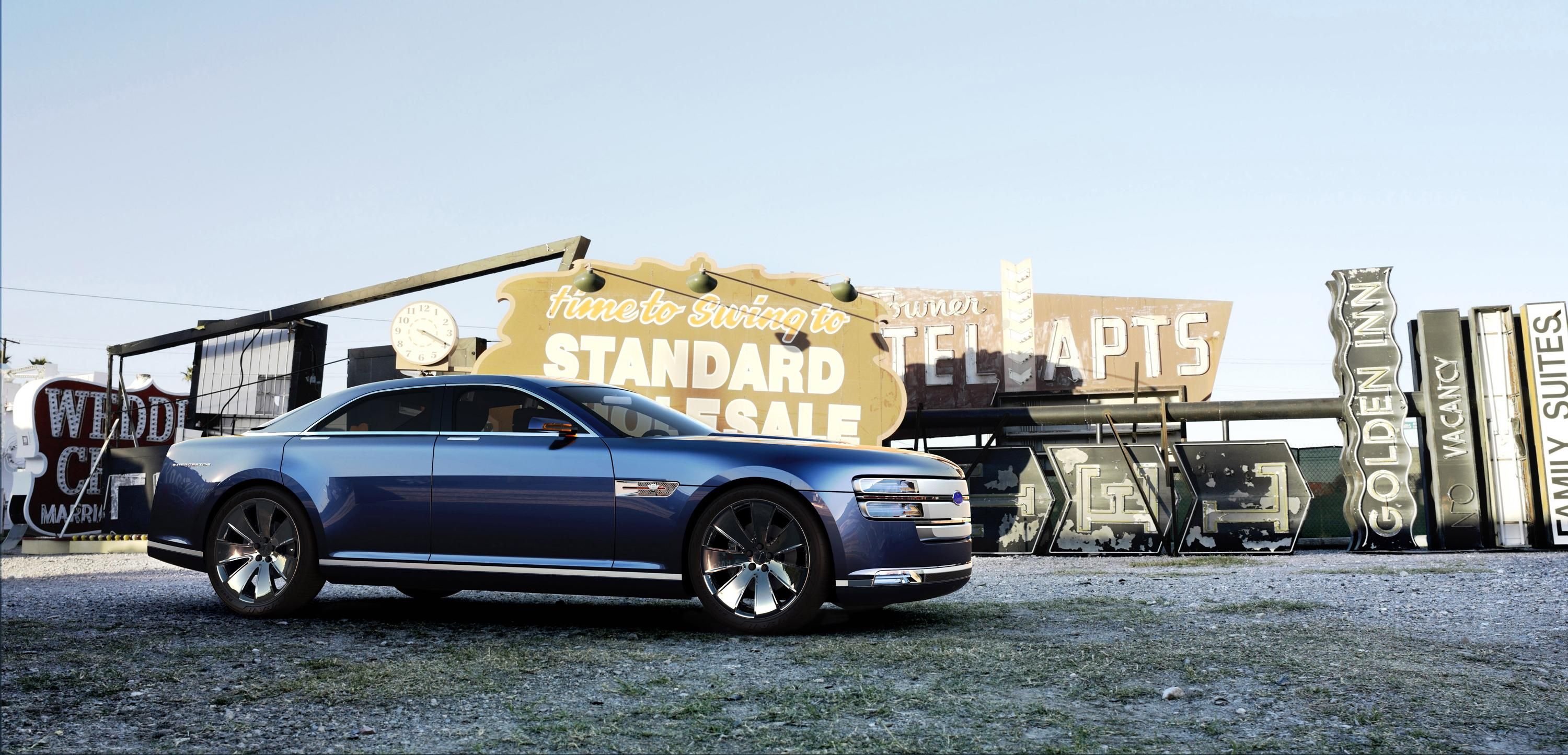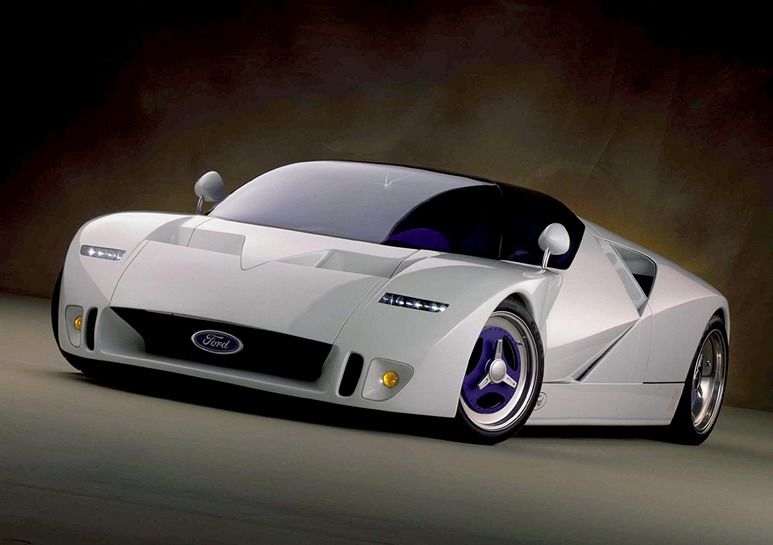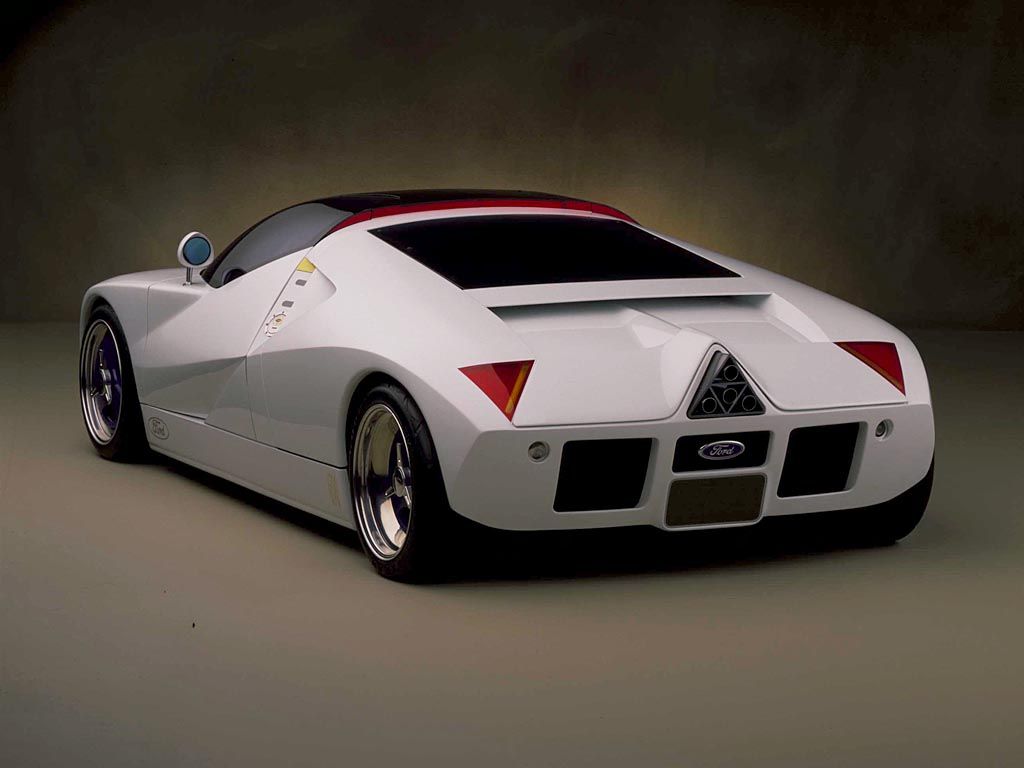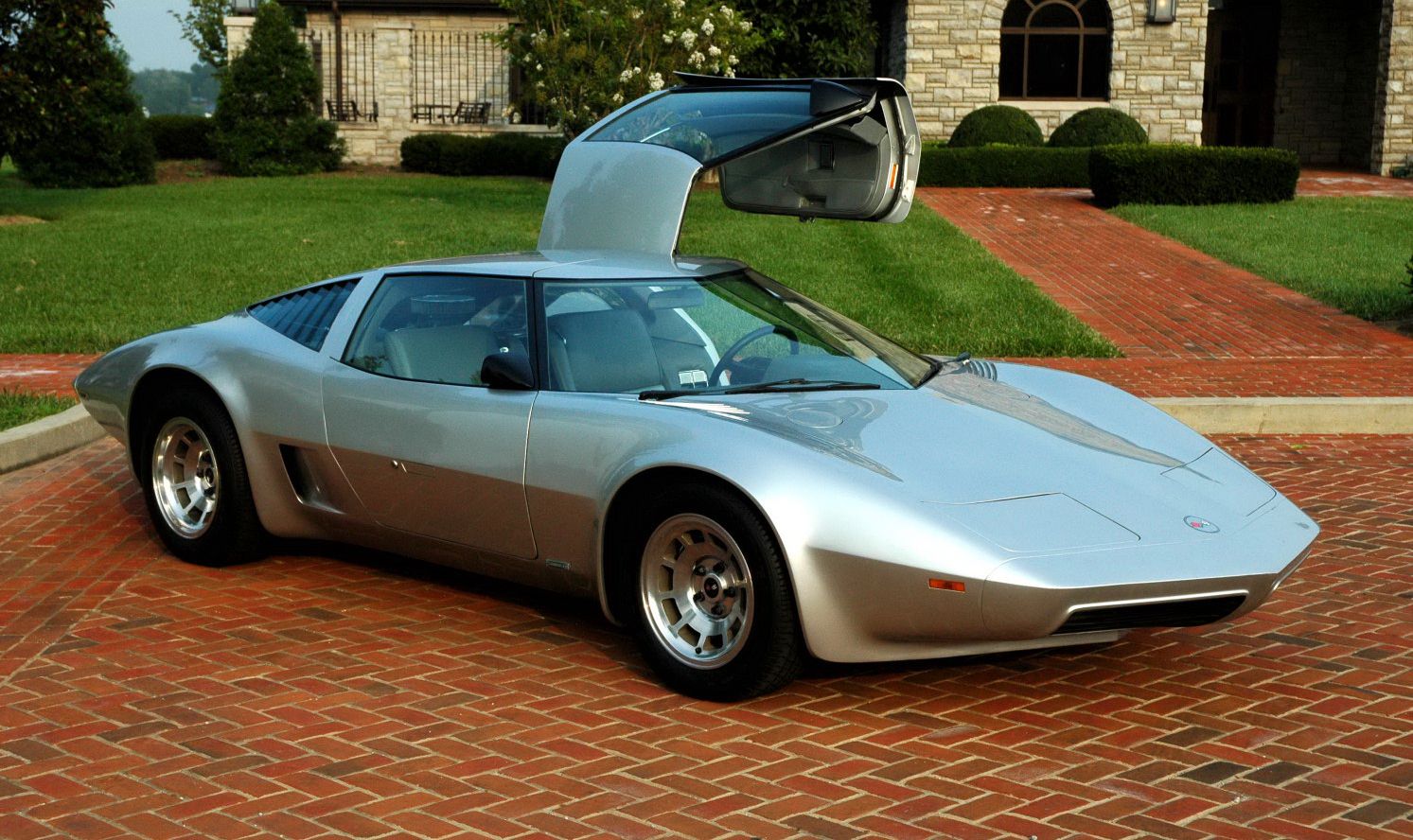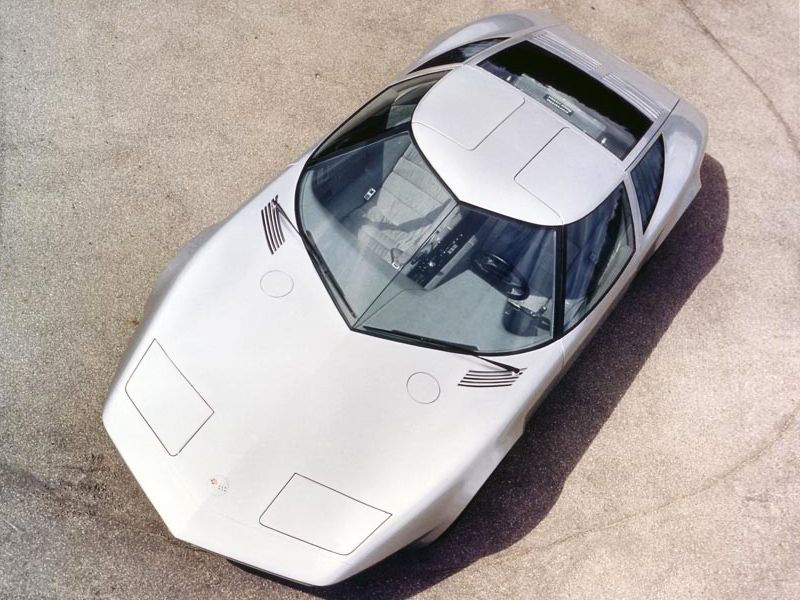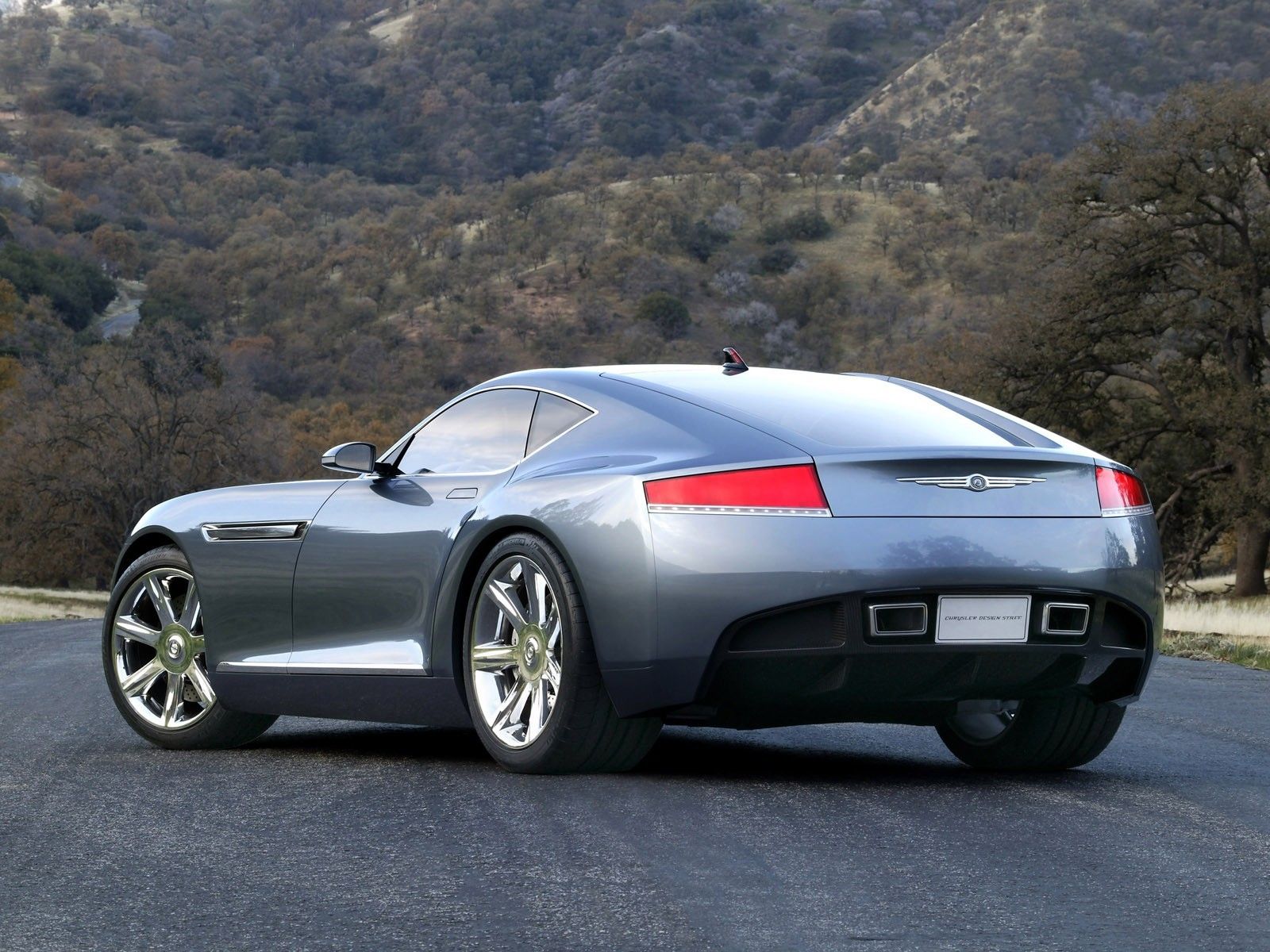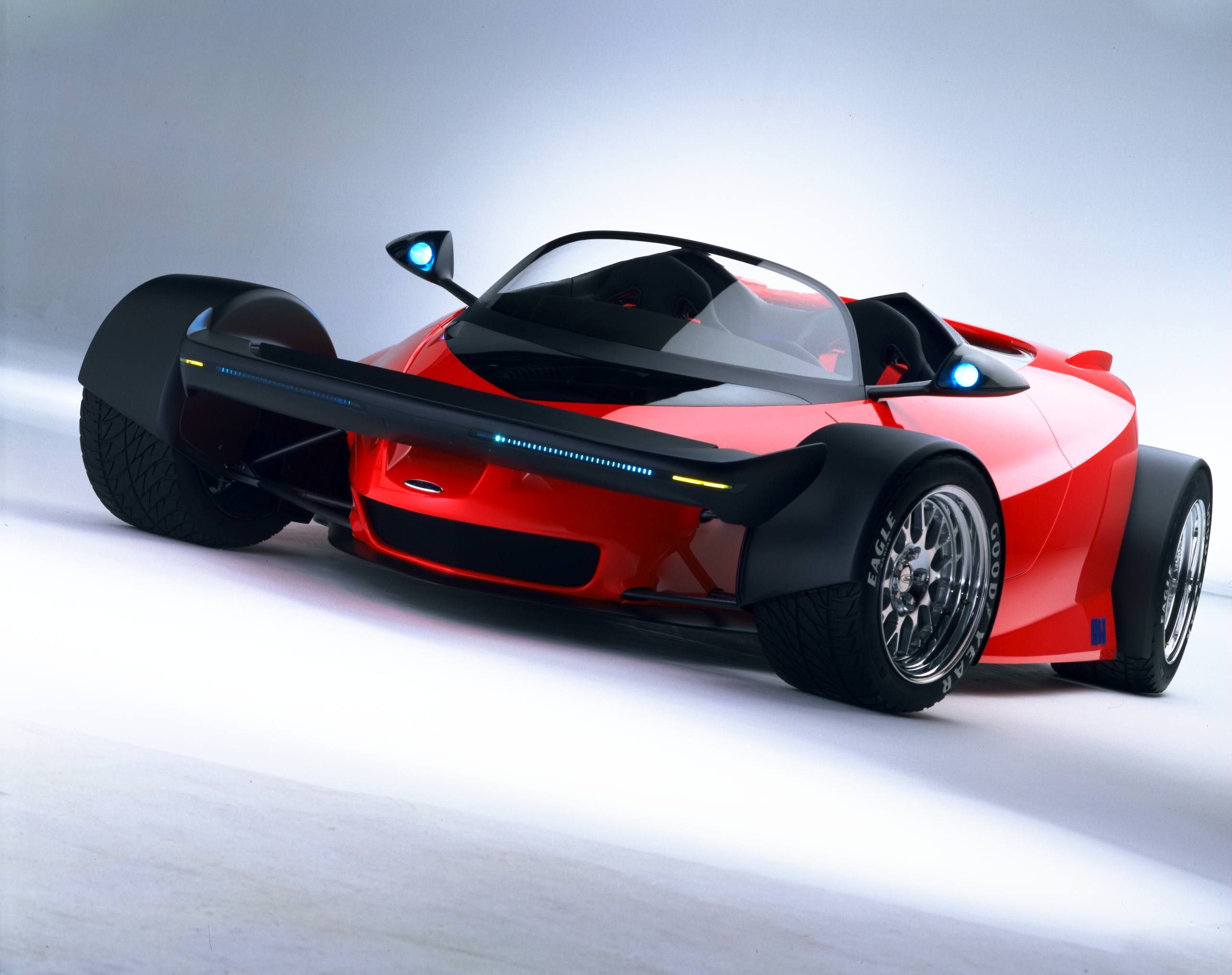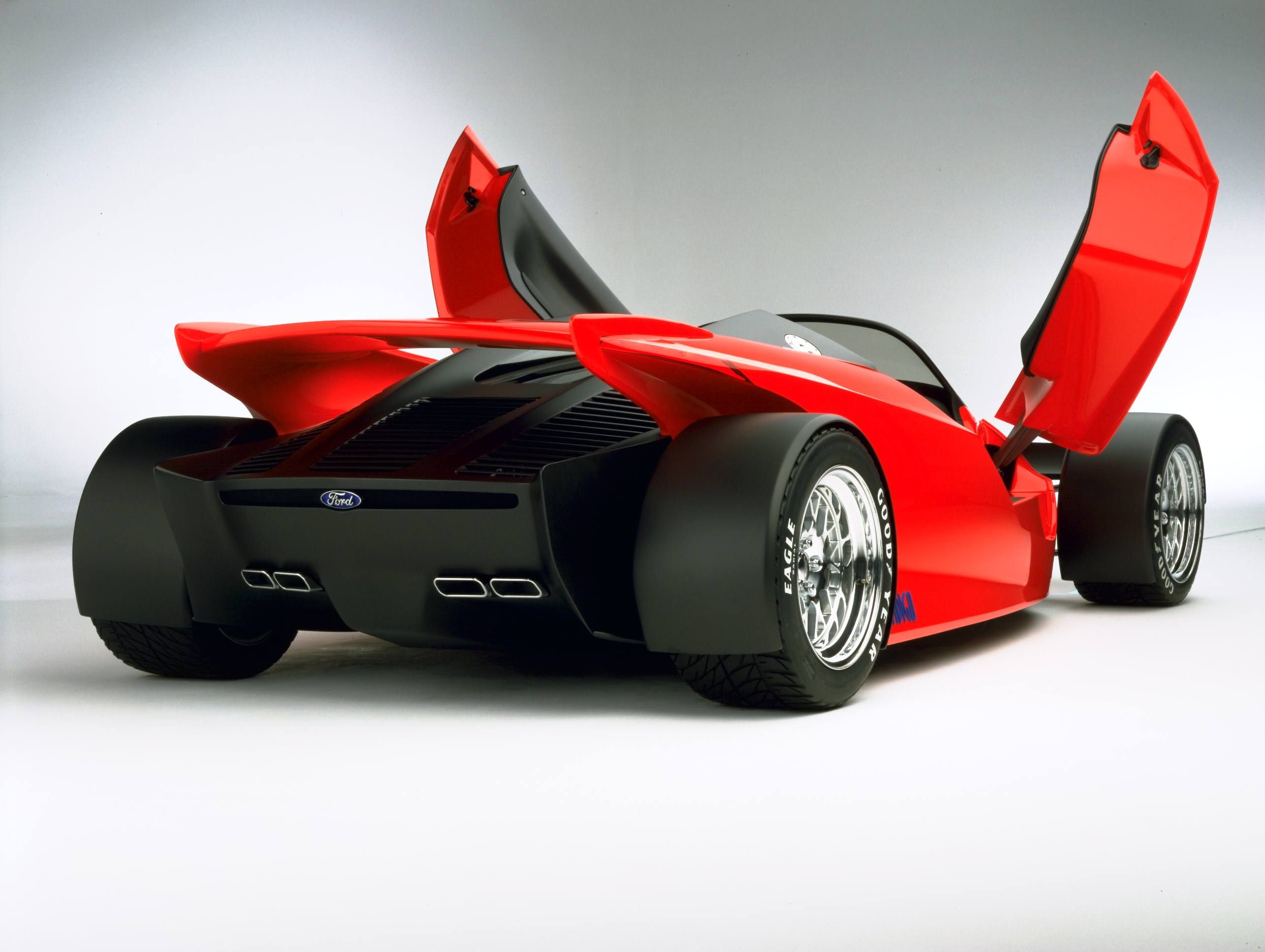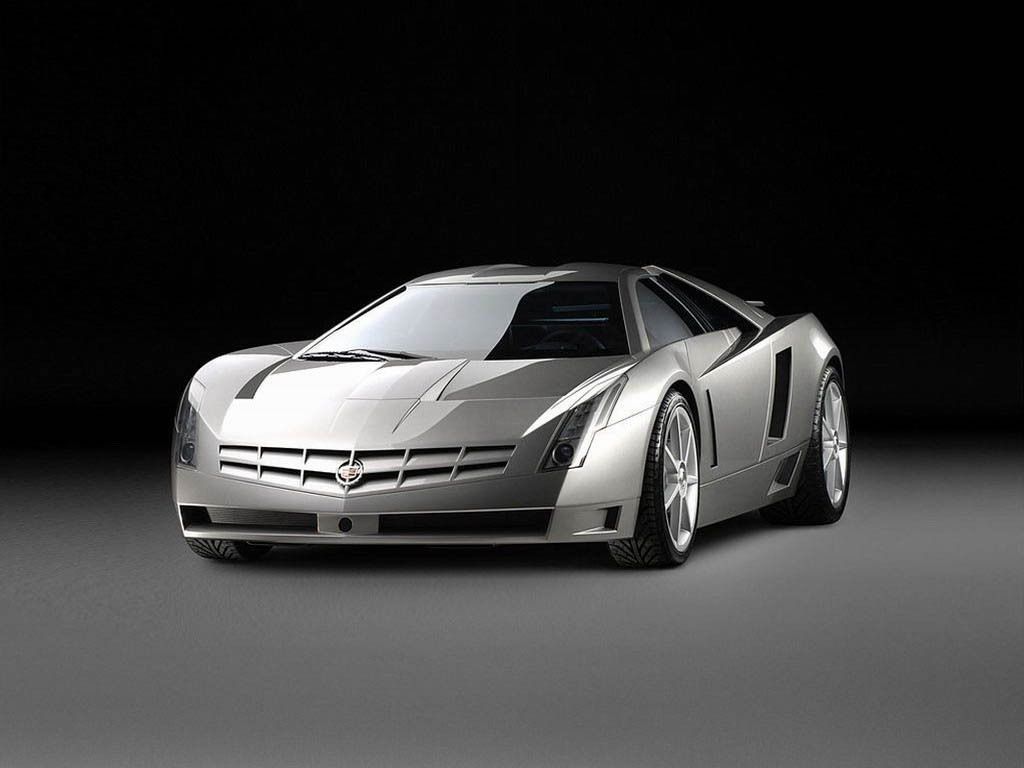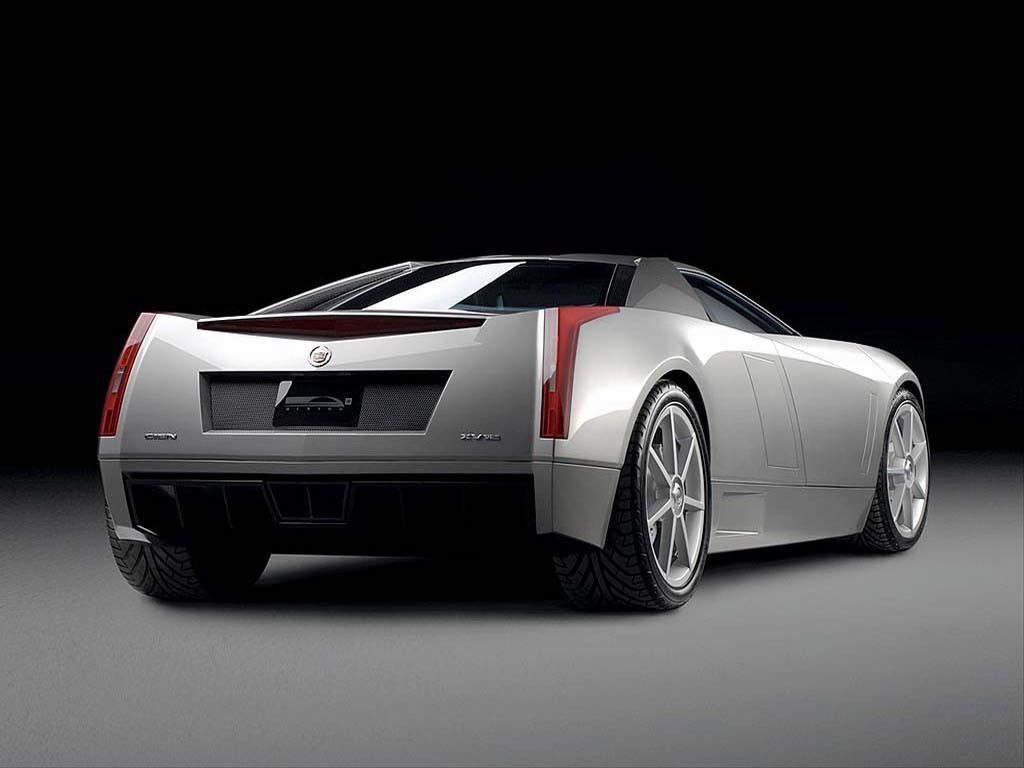Often, car companies like to give us hints at their future through their concepts. Sometimes, these prototypes aim to break established boundaries, while others pay homage to iconic models from the past and show us how a modern-day version could look like. Since these cars are not required to cover all tedious requirements a production version has to, the designers can go crazy with their creativity.
It’s no surprise then that concept cars are often the biggest head turners at car shows. Although every car brand has its own portfolio of interesting concepts, some of the most epic automotive art comes from the USA. Sadly, for one reason or another, many of these aesthetic and technological marvels remained prototypes. Here are some of the greatest American cars that never made it into production.
Chrysler 300 HEMI C (2000)
The Chrysler 300 is not a new name, as it can be traced back to the 1950s. However, the modern-day 300, which is a global model, came to us in 2004 and has since undergone numerous upgrades, even though it’s still being built on the same Mercedes platform.
Regardless of what a car is based on, the body can still be shaped in many ways.
With 353 horsepower and 353 pound-feet (479 Nm) sent to the rear wheels via a 4-speed automatic. It would have been able to hit 60 mph (96 km/h) in around 5.8 seconds, on its way to over 160 mph (258 km/h). It was supposed to be an homage to the 1950s Chrysler 300, but never went beyond the concept stage.
Chrysler 300 HEMI C specifications
|
Engine |
5.7-liter HEMI V-8 |
|---|---|
|
Horsepower |
353 HP |
|
Torque |
353 LB-FT |
|
Transmission |
4-speed automatic |
|
0 to 60 mph |
5.8 seconds |
|
Top Speed |
160 mph |
Ford Interceptor (2007)
In 2007, Ford almost gave the Chrysler 300 a competitor.
Torque figures are not available, but the engine also had flex-fuel capability. This was actually a modified version of the 4.6-liter engine from the earlier S197 Mustang GT. The Mustang connection doesn’t stop there, as the car was based on a modified DC2 platform. Power went to the rear wheels, through a 6-speed manual.
As with most concepts, the Interceptor never went into production. However, many of its design features, such as the tri-bar horizontal grille, are found on later Ford models. The Ford Taurus design was heavily influenced by the Interceptor.
Read our full review on the 2007 Ford Interceptor
Cadillac Sixteen (2003)
Every now and then American manufacturers like to give us lavish luxury and over-the-top engineering. The Cadillac Sixteen is one such example.
It only makes sense that it should have a lot of engine too. This is why it used a 13.6-liter normally-aspirated V-16, which produced north of 1,000 horsepower and 1,000 pound-feet (1,356 Nm) of torque. All of this went to the rear wheels, through a smooth 4-speed automatic. The engine was capable of nearly 17.0 mpg (14L/100km), thanks to a “displacement on demand system” which could deactivate up to 12 cylinders when the car was cruising. The Cadillac Sixteen was intended to be a spiritual successor to the 1930s Cadillac V-16. Although it never went into production, models like CTS and XLR were influenced by its design.
2003 Cadillac Sixteen specifications
|
Engine |
13.6-liter normally-aspirated V-16 |
|---|---|
|
Horsepower |
1,000 HP |
|
Torque |
1,000 LB-FT |
|
Transmission |
4-speed automatic |
|
Weight |
5,005 lbs |
Read our full review on the Cadillac Sixteen
Ford GT90 (1995)
I think we can agree that the 1960s Ford GT40 is a legendary piece of machinery, which is why for a long time Ford struggled to come up with a worthy successor. One car that came pretty close was the Ford GT90. It was built on the Jaguar XJ220 chassis, but unlike the Jag, it actually came with a V-12.
The gearbox was a 5-speed manual. Although power went to the rear wheels only, the 0-62 mph (100 km/h) sprint happened in 3.1 seconds. The top speed was 253 mph (407 km/h). If Ford hadn’t canceled production, the GT90 would have broken the 250 mph (400 km/h) barrier almost a decade before the Bugatti Veyron.
Ford GT90 specifications
|
Engine |
5.9-liter V-12 |
|---|---|
|
Horsepower |
720 HP |
|
Torque |
660 LB-FT |
|
Transmission |
5-speed manual |
|
0 to 62 mph |
3.1 seconds |
|
Top Speed |
253 mph |
Read our full review on the Ford GT90
Chevrolet Aerovette (1970)
Although we now have a mid-engine Corvette in the face of the C8, the initial plans for such a car go back to 1969. At that time, Zora Duntov and his team built two prototypes. Not long after the project was suspended.
Thanks to the extensive use of aluminum, the car weighed just 2,600 pounds (1,180 kg). Development spanned over a few years. The final version featured a 6.6-liter V-8. Before it managed to go into production, the Aerovette project was scrapped, due to imported mid-engine sports cars having poor sales in the US.
Chevrolet Aerovette specifications
|
Engine |
6.6-liter V-8 |
|---|---|
|
Horsepower |
420 HP |
|
Weight |
2,600 lbs |
Chrysler Firepower (2005)
Introduced in 2005, the Firepower was supposed to be a more GT-oriented sports car. It was based on the Dodge Viper but focused a bit more on luxury and comfort. An extensive amount of leather was used in the interior and a lot of elements, such as the gauge cluster had a chrome finish, which hints back to the 1950s and 1960s.
This meant a 0-60 mph time of 4.5 seconds and a top speed of 174 mph (280 km/h). The Firepower was supposed to go into production in 2006, as it was, but the project was canceled.
Chrysler Firepower specifications
|
Engine |
6.1-liter V-8 HEMI |
|---|---|
|
Horsepower |
425 HP |
|
Torque |
420 LB-FT |
|
0 to 60 mph |
4.5 seconds |
|
Top Speed |
174 mph |
Read our full review on the Chrysler Firepower
Ford Indigo (1996)
The Indigo can best be described as a KTM X-Bow on steroids. Its purpose was to showcase Ford’s Indy car technology. It featured a single-piece monocoque made of carbon-fiber composite material and modified Indy-car suspension, bolted directly to the chassis. In addition, the car had a mid-engine, rear-wheel-drive layout.
Power went to the ground through a 6-speed sequential gearbox. The car has a curb weight of around 2,300 pounds (1,043 kg). All this translates into a 0-60 mph time in 4 seconds and a 180 mph (290 km/h) top speed. Two prototypes were built, only one of which fully functional.
Ford Indigo specifications
|
Engine |
6.0-liter V-12 |
|---|---|
|
Horsepower |
435 HP |
|
Torque |
405 LB-FT |
|
Transmission |
6-speed sequential |
|
0 to 60 mph |
4 seconds |
|
Top Speed |
180 mph |
|
Weight |
2,300 lbs |
Cadillac Cien (2002)
Cadillac is known for luxury before anything else. With this in mind, it seemed a bit uncharacteristic that the company decided to celebrate its 100th anniversary with a supercar. Still, there’s no reason to complain as the Cadillac Cien is, in typical Cadillac tradition, as extravagant as concepts get.
The 7.5-liter V-12 engine featured direct injection and GM’s cylinder deactivation system, for greater fuel economy. At full capacity, the unit produced 750 horsepower and 650 pound-feet (881 Nm). A fully-functional prototype was built, but the car never went beyond that stage.
Cadillac Cien specifications
|
Engine |
7.5-liter V-12 |
|---|---|
|
Horsepower |
750 HP |
|
Torque |
650 LB-FT |
Read our full review on the Cadillac Cien
Ford Shelby Cobra & Ford GR-1 (2004 & 2005)
In the early 2000s, American manufacturers decided to go old-school. We were blessed by numerous creations influenced by the retro-futuristic design theme. The blue oval in particular gave us the S197 Mustang and a GT40 successor. It’s no surprise that someone thought about what a modern-day Shelby Cobra and Daytona Coupe would look like.
Both the 2004 Cobra and 2005 GR-1 were front-engine, rear-wheel-drive concepts, built on a heavily-modified Ford GT chassis. The engine was a 6.4-liter V10, producing 605 horsepower in the GR-1 and 645 in the Cobra. Peak torque was 501 pound-feet (679 Nm). The 60 mph (96 km/h) sprint happens in around 3.8 seconds. The top speed was 190 mph (307 km/h) for the GR-1 and 207 mph (333 km/h) for the Cobra. Both concepts used a six-speed manual transmission. Sadly, they never went into production.
Ford Shelby Cobra & Ford GR-1 specifications
|
Engine |
6.4-liter V10 |
6.4-liter V10 |
|---|---|---|
|
Horsepower |
645 HP |
605 HP |
|
Torque |
501 LB-FT |
501 LB-FT |
|
0 to 60 mph |
3.8 seconds |
3.8 seconds |
|
Top Speed |
207 mph |
190 mph |
Read our full review on the Ford GR-1
Chrysler ME Four-Twelve (2004)
Mid-engine, four turbochargers, twelve cylinders. This is what the name of the supercar stands for. It featured a sleek design with a very low silhouette and well-pronounced rear quarter panels.
The engine is a Mercedes M120 6.0-liter V-12, which is quad-turbocharged. It makes 850 horsepower and north of 738 pound-feet (1,000 Nm). Power went to the rear wheels through a seven-speed dual-clutch automatic. All this means that 0-60 mph happens in 2.9 seconds and the top speed is 248 mph (399 km/h).
A powerful car needs powerful brakes, which is why the ME Four-Twelve has 16-inch discs with six-piston calipers front and back. Had it entered in a production stage, it would have given the Veyron a run for its money.
Chrysler ME Four-Twelve specifications
|
Engine |
6.0-liter V-12 |
|---|---|
|
Horsepower |
850 HP |
|
Torque |
738 LB-FT |
|
Transmission |
seven-speed dual-clutch |
|
0 to 60 mph |
2.9 seconds |
|
Top Speed |
248 mph |
Read our full review on the Chrysler ME Four-Twelve

